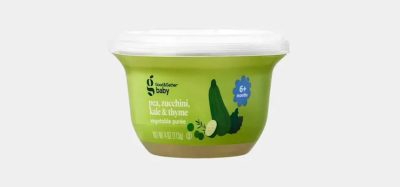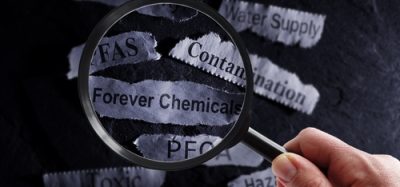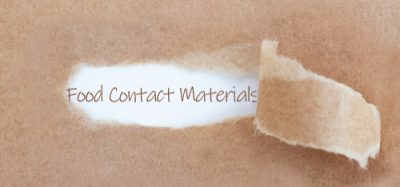A need for sensitivity, robustness and compliance in dioxin analysis
- Like
- Digg
- Del
- Tumblr
- VKontakte
- Buffer
- Love This
- Odnoklassniki
- Meneame
- Blogger
- Amazon
- Yahoo Mail
- Gmail
- AOL
- Newsvine
- HackerNews
- Evernote
- MySpace
- Mail.ru
- Viadeo
- Line
- Comments
- Yummly
- SMS
- Viber
- Telegram
- Subscribe
- Skype
- Facebook Messenger
- Kakao
- LiveJournal
- Yammer
- Edgar
- Fintel
- Mix
- Instapaper
- Copy Link
Posted: 4 September 2020 | David Hope | No comments yet
David Hope, CEO of Pacific Rim Laboratories, discusses how food safety testing can benefit from reliable, efficient methods of dioxin analysis.
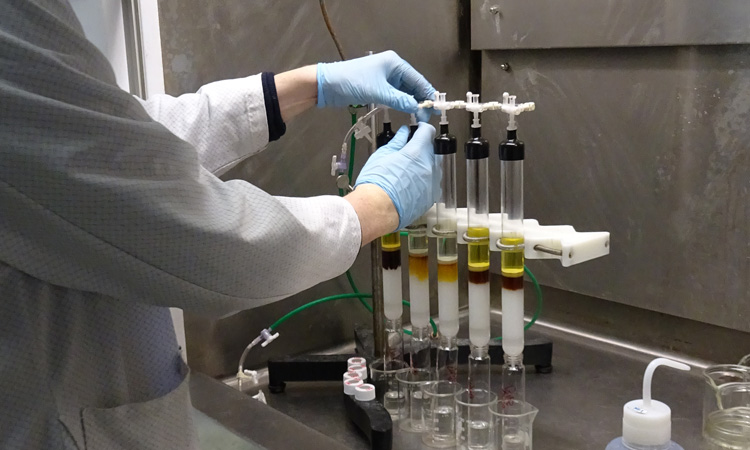

In a food product’s journey to market, a range of analytical tests are required to verify that levels of contamination meet food safety standards, and that the product is, therefore, safe for consumption.
Contamination can arise as a by-product of industrial or natural processes. Particularly worrisome contaminants exist in the form of persistent organic pollutants, or POPs, which are – as the name suggests – highly persistent and accumulate in the food chain. Testing for POPs, such as dioxins, is an essential element of food safety.
In food safety testing, a single sample must often be tested for multiple possible contaminants to be verified safe
Dioxin analysis is included in rigorous testing procedures for fatty food samples like fish, meat and dairy, as these contaminants can have harmful effects on human and environmental health. This was, unfortunately, demonstrated in 2008, when high levels of dioxins were found in the buffalo milk of dairies in Campania, Italy, where most Italian mozzarella production takes place.1 The contamination, found to be due to illegal dumping of toxic waste nearby, polluted the water, soil and subsequent food products in the region, resulting in elevated cancer rates among the local population and a 35 percent slump in Italian mozzarella sales in the first half of 2008 (with other countries temporarily suspending all imports from the country). This event was dubbed the ‘2008 dioxin crisis’2; it prompted stricter environmental and food safety monitoring efforts and highlighted the potentially severe impact of food contamination on both citizen health and economic profitability.
To protect against such a crisis, food testing companies need sensitive, robust and reliable analytical methods to test for dioxins in a fast, compliant way. Sensitivity and compliance are especially important for dioxins as these substances can cause toxic effects at ultra-low levels, and food producers must adhere to some of the most stringent regulations for POPs worldwide.
Sensitive, compliant, productive
While some POPs have been deliberately manufactured in the past for uses including agrochemicals, coolants, hydraulic fluids, plasticisers and flame retardants, dioxins are only produced unintentionally as a by-product of industrial processes (including smelting, chlorine bleaching, pesticide manufacturing and waste incineration). Humans are predominantly exposed to dioxins through the food they consume – most notably via meat, fish and dairy products.3,4
Dioxins accumulate in living tissue, remain intact for years and are highly toxic: they can increase the risk of developing cancers, hormonal or immune disruption, reproductive or developmental problems, birth defects, and more.4 They also negatively impact environmental health on a global scale, with dioxins readily spreading worldwide regardless of where they were produced.
Dioxin analysis is included in rigorous testing procedures for fatty food samples like fish, meat and dairy, as these contaminants can have harmful effects on human and environmental health
Toxicological effects can occur at very low levels, and some individual dioxins are more toxicologically significant than others. Because of this, tests must be sensitive to tiny amounts of dioxins to produce the accurate results needed to assure food safety: tests must be able to separate mixtures into individual compounds and measure at ‘parts per trillion’ levels, rather than typical parts per billion. Tests must also be verifiably and rigorously compliant with official food safety regulations, while also being quick and efficient in order to increase throughput, minimise costs and maximise a laboratory’s return on investment – an essential consideration for organisations engaged in competitive and fast-paced global markets.
While it can be difficult to retain the essential sensitivity needed to accurately characterise dioxin levels while meeting increasingly stringent timelines and quotas, advanced analytical equipment offers a solution. Methods based on high-resolution mass spectrometry (MS) enable food safety testing laboratories to optimise the quality and integrity of their results, and support the delivery of compliant, fast-turnaround dioxin analysis for a wide range of food samples.
A robust and integrated analytical workflow
Dioxins, and other POPs, are normally analysed in challenging samples, where they must first be separated from the other chemicals and components of the sample – known as ‘matrix’ – which can interfere with the targeted compounds of interest. Because of this, it is crucial that sample preparation is performed properly in order to minimise matrix effects. Pacific Rim Laboratories uses a Thermo Scientific Accelerated Solvent Extraction (ASE) system to extract contaminants from samples with a high fat content, such as fish, or dry food samples, such as tea. Samples are then transferred to a Thermo Scientific Rocket Evaporator System, which automates the concentration and evaporation steps before analysis begins with mass spectrometry.
In POPs analysis, the most established method for determination – and considered the ‘gold standard’, especially for dioxins – is magnetic sector gas chromatography–high-resolution mass spectrometry (Magnetic Sector GC-HRMS).3 This methodology meets global regulatory requirements for dioxin and POPs analysis and is well-established in the industry, with new advances further increasing its sensitivity and capabilities. Pacific Rim Laboratories, with facilities in Vancouver, Canada, utilise Thermo Scientific DFS Magnetic Sector GC-HRMS to achieve efficient and reliable quantitative and confirmatory analysis of dioxins and a range of other POPs, such as polychlorinated biphenyls (PCBs) and polybrominated diphenyl ethers (PBDEs).
Looking forward, testing facilities will need analytical solutions that are able to reliably and robustly quantify lower and lower levels of contaminants
For dioxin analysis specifically, advanced Magnetic Sector GC-HRMS solutions, which separate ions using magnetic and electric fields, can quantify dioxins down to very low femtogram levels. This brings high confidence in analysis and defensibility of data in verifying sample safety – essential to steer clear of damaging dioxin crises like in Italy in 2008.
Alongside sensitivity, confidence and data integrity, Magnetic Sector GC-HRMS solutions assure reliable, robust dioxin analysis with consistent sensitivity. In a field as heavily regulated and potentially dangerous as food product contamination, robustness and quality are of priority; all systems and procedures must be compliant and reliable for every sample to ensure trustworthiness for consumers, customers and the wider food market. Magnetic Sector GC-HRMS can provide such robustness. In 2016, for example, Pacific Rim Laboratories worked on a major project in which they ran 757 polycyclic aromatic hydrocarbon samples, with an initial calibration and continuing calibrations every 12 hours for the following six weeks – and not once experienced a calibration failure.5
Increasing productivity – without compromising compliance
In food safety testing, a single sample must often be tested for multiple possible contaminants to be verified safe. All analytical solutions have built-in ‘dead times’ in their analyses in order to prevent any contamination between different matrices; while this decreases efficiency and introduces waiting time into analytical workflows, it is essential to ensure that no sample is compromised and that all results are accurate. The challenge for any laboratory is, therefore, to maximise analytical productivity – while maintaining compliance.
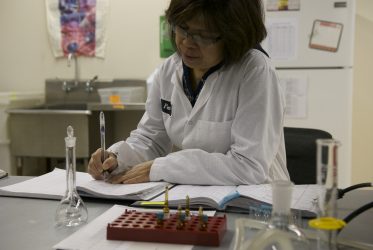

All analytical solutions have built-in ‘dead times’ in their analyses in order to prevent any contamination between different matrices
The final steps of the analytical workflow for dioxin and POPs are software and reporting – steps in which compliance and robustness remain of top priority. When analysing dioxins and POPs in food and feed, laboratories must report their Limit of Detection and Quantification (LOD and LOQ) values, and thus require full transparency on the calculations performed by their software. For the DFS Magnetic Sector GC-HRMS and associated Software Package, the LOQ and LOD values are based on the ‘signal-to-noise’ concept, for which calculations are made according to official regulation, are fully transparent, and can be readily reported for audit.
Overcoming analytical obstacles – present and future
As analytical capabilities improve and food chains grow increasingly global and complex, food safety regulations will likely become more stringent. Currently, the Stockholm Convention on POPs targets 28 different types of polluting chemical substance (dioxins included) – just a fraction of the over 30,000 chemicals thought to be in worldwide use, many of which are potential POPs in terms of their persistence, toxicity, bioaccumulation or long-range transport.3
Looking forward, testing facilities will need analytical solutions that are able to reliably and robustly quantify lower and lower levels of contaminants, while remaining flexible to meet tightening regulation. Testing laboratories must maximise sensitivity and productivity to generate high-quality results, while reducing costs, increasing the number of samples they can process and remaining compliant. To this end, facilities can use robust analytical equipment, such as that implemented by Pacific Rim Laboratories, to overcome analysis challenges, meet regulation and optimise operations – necessary to facilitate the consistent, high-quality food safety testing needed to safeguard human and environmental health.
References
- Bonanomi, M. (2017) Detecting Dioxins: Could Italy’s Famous Buffalo Mozzarella Be Dangerous? Analyte Guru, 14 August 2017. https://analyteguru.com/detecting-dioxins-could-italys-famous-buffalo-mozzarella-be-dangerous/
- Katsoyiannis, A. and Cincinelli, A. (2017) On persistent organic pollutants in Italy – From Seveso to the Stockholm Convention and beyond. Science of The Total Environment Volume 579, 1 February 2017, Pages 514-516.
- Thermo Fisher Scientific (2018) Persistent Organic Pollutants in Food and the Environment: Overview of regulations, analysis and trends.
- World Health Organization (2020) Persistent organic pollutants (POPs). https://www.who.int/foodsafety/areas_work/chemical-risks/pops/en/
- Chromatography & Mass Spectrometry Solutions (2017) A visit at Pacific Rim Lab, Vancouver, Canada with the DFS Magnetic Sector GC-HRMS Product Team https://www.youtube.com/watch?v=97FH_wmTz_g
- Chromatography & Mass Spectrometry Solutions (2018) An Interview with David Hope, Pacific Rim Inc. Vancouver, Canada https://www.youtube.com/watch?v=QEhrXjFrdZI
About the author
David Hope has been active in the environmental laboratory business for 40 years and is a recognised expert in the analysis of trace organic pollutants. He is a founding partner and Chief Executive Officer of Pacific Rim Laboratories, an environmental lab specialising in the ultra-trace analysis of persistent organic pollutants (POPs) by HRMS, with clients in based in Asia, South America, Europe, and the United States. David first started working on dioxin analysis in the late 1980s and now oversees an 9000 sq. ft. food and environmental testing lab with three Thermo Scientific™ DFS™ Magnetic Sector GC-HRMS, two TSQ™ 8000/9000EVO GC-MS-MS and a TSQ Quantis LC-MS/MS.
He has been invited on several occasions to talk on POPs analysis at POPs Symposia and has presented papers on dioxin and PCB analysis at the International Symposium on Halogenated Persistent Organic Pollutants (also known as the Dioxin Conference). These papers include the “Improved PCB Congeners Specific Analysis by HRGC-HRMS,” “Inexpensive Rapid Method for POPs Analysis of Food using ASE and Tandem Acid Silica/Carbon Columns,” and more. Dave has taken active role in the Canadian lab industry and is a Past President of the Canadian Council of Independent Laboratories and former First Vice Chair of the Canadian Environment Industry Association.




